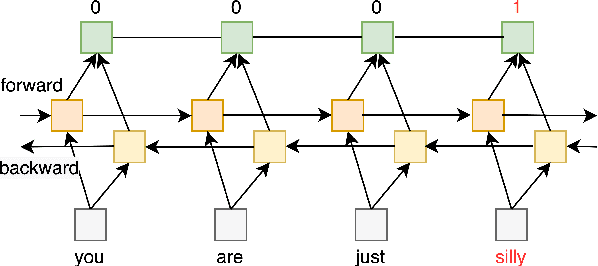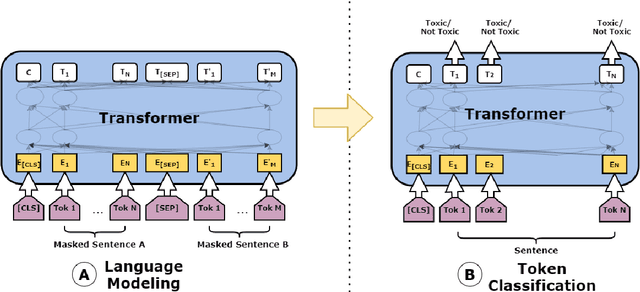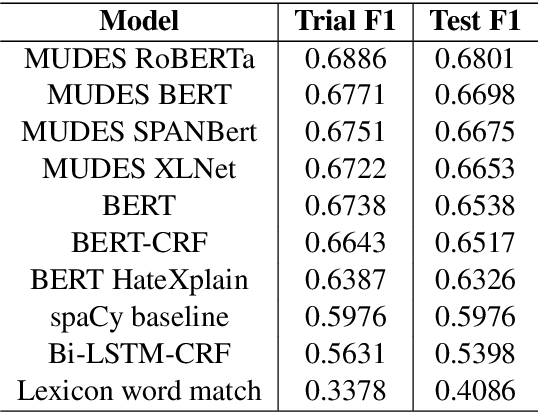Alex Ororbia
WLV-RIT at SemEval-2021 Task 5: A Neural Transformer Framework for Detecting Toxic Spans
Apr 15, 2021



Abstract:In recent years, the widespread use of social media has led to an increase in the generation of toxic and offensive content on online platforms. In response, social media platforms have worked on developing automatic detection methods and employing human moderators to cope with this deluge of offensive content. While various state-of-the-art statistical models have been applied to detect toxic posts, there are only a few studies that focus on detecting the words or expressions that make a post offensive. This motivates the organization of the SemEval-2021 Task 5: Toxic Spans Detection competition, which has provided participants with a dataset containing toxic spans annotation in English posts. In this paper, we present the WLV-RIT entry for the SemEval-2021 Task 5. Our best performing neural transformer model achieves an $0.68$ F1-Score. Furthermore, we develop an open-source framework for multilingual detection of offensive spans, i.e., MUDES, based on neural transformers that detect toxic spans in texts.
Smart Library: Identifying Books in a Library using Richly Supervised Deep Scene Text Reading
Nov 22, 2016



Abstract:Physical library collections are valuable and long standing resources for knowledge and learning. However, managing books in a large bookshelf and finding books on it often leads to tedious manual work, especially for large book collections where books might be missing or misplaced. Recently, deep neural models, such as Convolutional Neural Networks (CNN) and Recurrent Neural Networks (RNN) have achieved great success for scene text detection and recognition. Motivated by these recent successes, we aim to investigate their viability in facilitating book management, a task that introduces further challenges including large amounts of cluttered scene text, distortion, and varied lighting conditions. In this paper, we present a library inventory building and retrieval system based on scene text reading methods. We specifically design our scene text recognition model using rich supervision to accelerate training and achieve state-of-the-art performance on several benchmark datasets. Our proposed system has the potential to greatly reduce the amount of human labor required in managing book inventories as well as the space needed to store book information.
 Add to Chrome
Add to Chrome Add to Firefox
Add to Firefox Add to Edge
Add to Edge